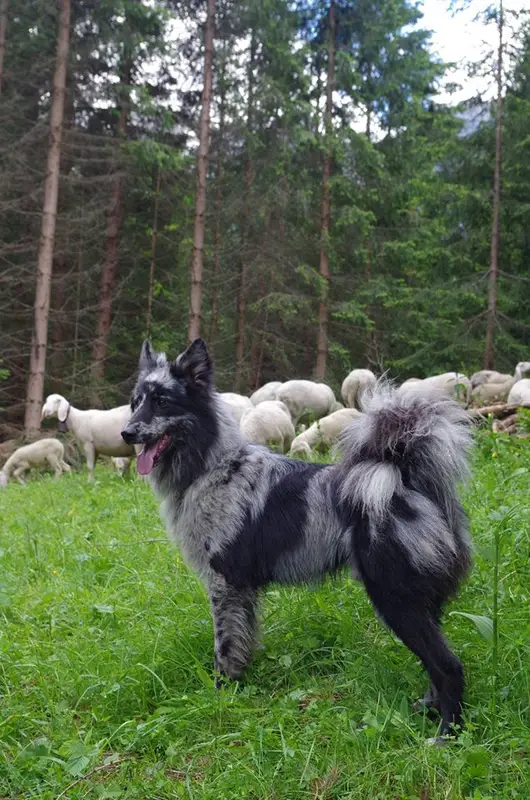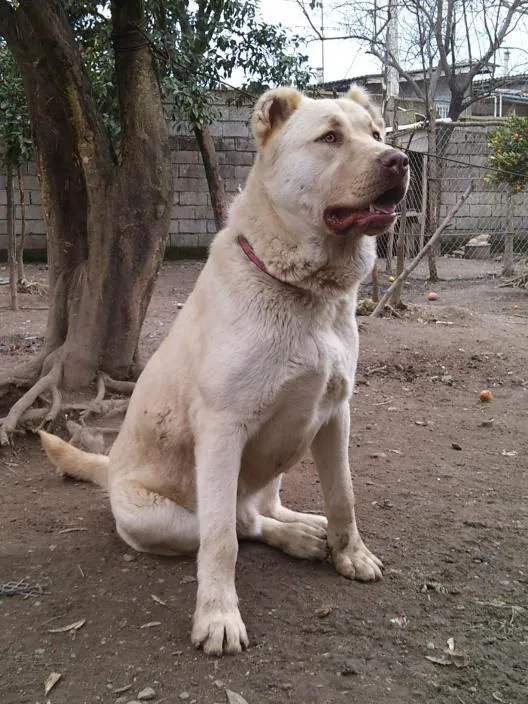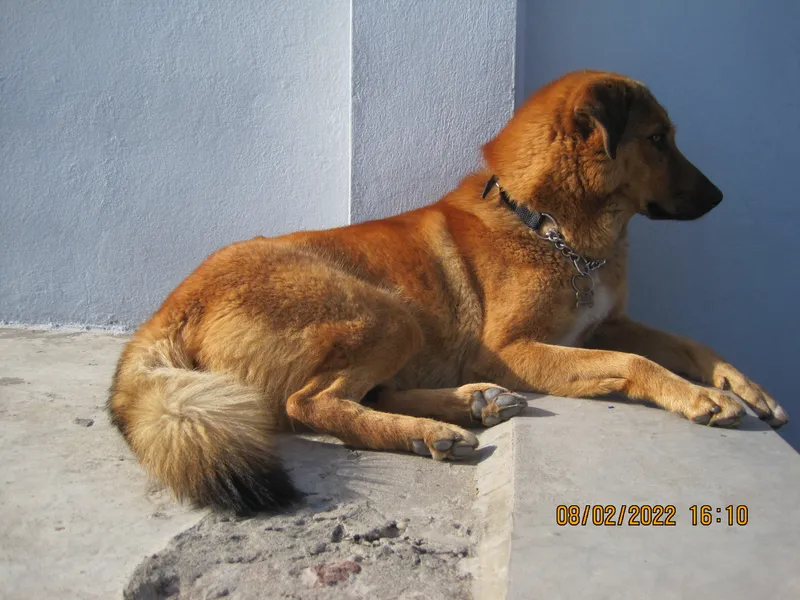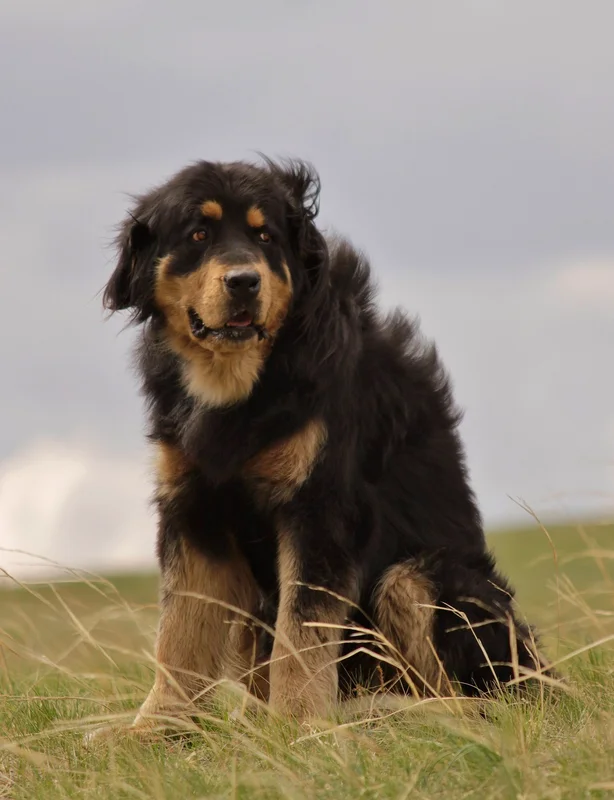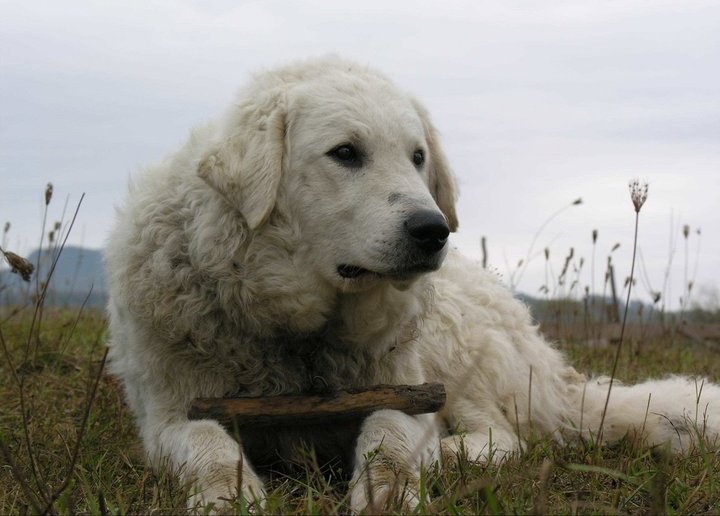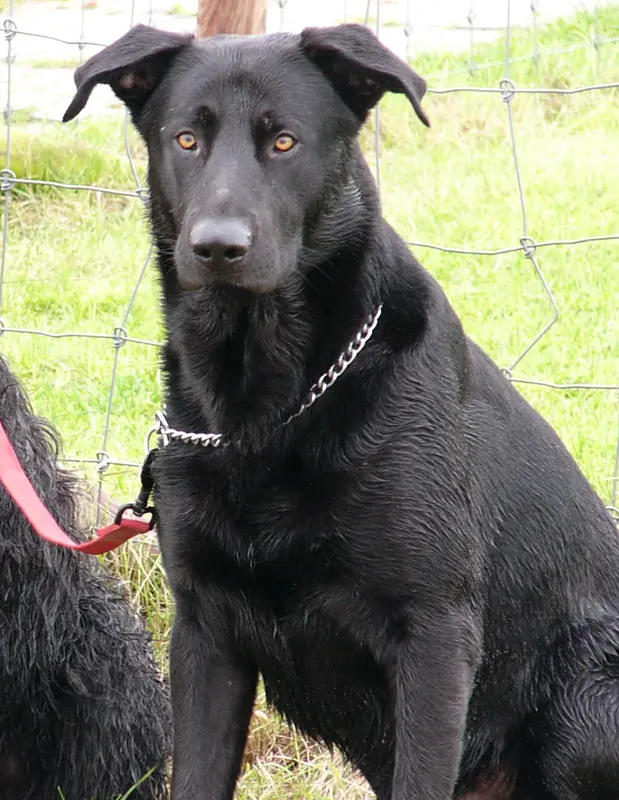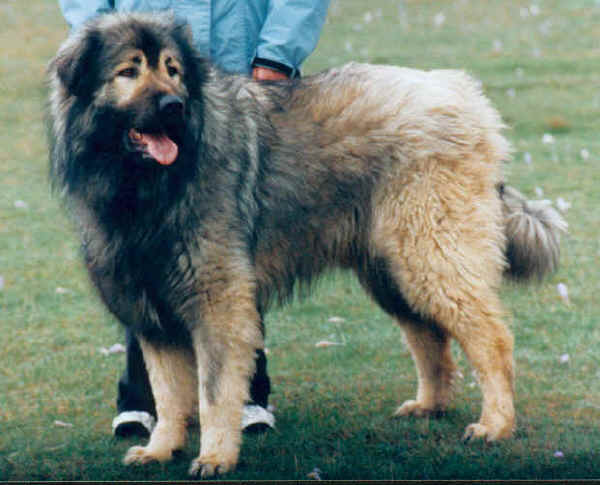Karakachan
The Karakachan dog is a large, loyal livestock guardian from Bulgaria, known for its bravery and protective instincts. With a rich history and strong work drive, they excel in guarding livestock and homes.
Overview
🐕Breed Overview
✨Key Traits
💡What Makes Karakachan Special
The Karakachan dog is characterized by its impressive size and strength, making it a formidable guardian. Its loyalty and bravery are standout traits, as they will not hesitate to confront threats to their flock or family.
The breed's independent nature means they may not always seek human approval, but they form strong bonds with their families. Their intelligence allows them to problem-solve and adapt to various situations, making them versatile working dogs.
Additionally, their deep, solid bark serves as an effective deterrent to intruders, enhancing their role as protectors.
The Karakachan dog, a majestic breed originating from Bulgaria, is renowned for its impressive stature and unwavering loyalty. This ancient livestock guardian has a rich history dating back to the Thracians, who utilized these dogs to protect their flocks from predators. With a proud and independent temperament, the Karakachan is both brave and intelligent, making it an invaluable companion for shepherds and families alike.
Their deep, solid bark serves as a warning to intruders, while their strong territorial instincts ensure they guard their home and livestock diligently. Karakachans are large dogs, typically standing between 25 to 30 inches tall and weighing between 88 to 125 pounds. They possess a thick, long coat that can be either shorthaired or longhaired, providing protection against harsh weather conditions.
Their appearance is characterized by a broad skull, powerful neck, and muscular body, reflecting their strength and endurance. As a working breed, the Karakachan thrives in environments where they can perform their natural duties. They require ample exercise, ideally around 90 minutes daily, to keep them physically fit and mentally stimulated.
Activities such as herding, agility training, and long walks are ideal for this breed. While they can adapt to family life, they are best suited for homes with space to roam and engage in their natural behaviors. Training a Karakachan can be challenging due to their independent nature, but with consistent and positive reinforcement methods, they can learn commands and social behaviors effectively.
Early socialization is crucial to help them become well-rounded companions. In summary, the Karakachan dog is a remarkable breed with a storied past, known for its bravery, loyalty, and protective instincts. They make excellent guardians for livestock and homes, and with the right training and socialization, they can also be loving family pets.
🎉Fun Facts
Karakachans are often used in Bulgaria to guard livestock, but they are also gaining popularity in the United States for similar roles.
The breed was officially recognized in 2005, but efforts to standardize it began in the 1970s.
The Karakachan dog is one of the oldest breeds in Europe, with roots tracing back to the Thracians.
They are known for their ability to confront large predators like wolves and bears to protect their flock.
Breed Characteristics
Family & Friends
Good Behavior
Get Up & Go
Household Harmony
Temperament & Personality
✨Key Traits
🐕Core Temperament
The temperament of the Karakachan dog is defined by its loyalty, bravery, and independence. They are protective of their family and territory, often displaying a calm demeanor until a threat is present.
While they can be aloof with strangers, they are affectionate and gentle with their family members, including children. Their strong guarding instincts make them vigilant protectors, but they require proper training and socialization to ensure they are well-adjusted.
Overall, the Karakachan is a dignified and intelligent breed that thrives in environments where they can fulfill their natural roles as guardians.
💫Personality Profile
Karakachan dogs are known for their proud and independent nature. They are highly intelligent and possess a strong instinct to protect their family and territory.
While they can be wary of strangers, they are loyal and affectionate with their families. Their protective instincts make them excellent guardians, but they require early socialization to ensure they are well-adjusted around new people and pets.
These dogs are typically calm and dignified, but they can be assertive when necessary. Their intelligence allows them to learn commands and tasks quickly, but they may also exhibit stubbornness at times, requiring consistent training and patience from their owners.
🔊Vocal Tendencies
Karakachans are known for their deep, solid bark, which they use to alert their owners to potential threats. They may bark when they perceive something unusual in their environment, especially if they feel their territory is being encroached upon.
While they are not excessive barkers, their vocalizations serve a purpose in their role as guardians. Their barking can vary in intensity depending on the situation, but they are generally more vocal when alerting to strangers or potential dangers.
Proper training can help manage their barking tendencies, ensuring they only vocalize when necessary.
Affection & Social Traits
Energy & Activity
Communication Style
Care Requirements
🏃♂️Exercise Requirements
Daily Exercise
The Karakachan dog is a large and powerful breed that requires a significant amount of exercise to maintain its physical and mental health. Ideally, an adult Karakachan should engage in at least 90 minutes of exercise each day. This can include a combination of brisk walks, running, and playtime in a secure area.
Given their history as livestock guardian dogs, they thrive in environments where they can roam and patrol their territory. Activities such as herding, agility training, or even engaging in dog sports can be beneficial for their mental stimulation and physical fitness. Puppies require shorter, more frequent exercise sessions to avoid overexertion, while senior dogs may need gentler activities to accommodate their changing energy levels.
Regular exercise not only helps manage their weight but also reduces the risk of behavioral issues stemming from boredom or pent-up energy. Insufficient exercise can lead to destructive behaviors, anxiety, and health problems such as obesity.
Preferred Activities
🏠Living & Adaptability
Space Requirements
Karakachans are large dogs that require ample space to thrive. Ideally, they should have access to a large yard or rural property where they can roam freely.
While they can adapt to living in a house with a small yard, they will need regular trips to open areas for exercise. Apartment living is not suitable for this breed due to their size and exercise needs.
Owners in smaller living situations should ensure they can provide sufficient daily exercise and mental stimulation through regular outings to parks or open fields. Without adequate space and exercise, Karakachans may exhibit signs of frustration or anxiety, leading to destructive behaviors.
Climate Preference
🍲Feeding Guide
Schedule
Food Types
Portion Size
Special Nutritional Needs
Karakachans may benefit from a diet rich in protein to support their muscular build and active lifestyle. It's important to choose high-quality dog food that meets their specific nutritional needs, including adequate vitamins and minerals.
Some dogs may have food sensitivities, so monitoring their reactions to new foods is essential. Regular veterinary check-ups can help determine if any dietary adjustments are necessary.
✨Grooming Requirements
Grooming Overview
The Karakachan dog has a thick, double coat that requires regular grooming to keep it healthy and free of mats. Depending on the coat type, brushing should be done at least once a week, with more frequent brushing during shedding seasons to manage loose hair.
Use a slicker brush or a comb to remove tangles and prevent matting. Bathing should be done as needed, typically every few months or when the dog gets particularly dirty.
Regular nail trimming and ear cleaning are also important to maintain overall hygiene. Pay attention to the dog's skin condition, as any signs of irritation or infection should be addressed promptly.
Care Schedule
Brush weekly; bathe every 2-3 months; trim nails every 2-4 weeks.
Health Profile
⚕️Health Care
Regular health care is vital for the longevity of the Karakachan dog. Routine veterinary check-ups, vaccinations, and preventive treatments are essential to catch any health issues early.
Dental care, including regular teeth brushing and professional cleanings, can prevent dental disease, which is common in larger breeds. Maintaining a healthy diet and weight is also crucial, as obesity can lead to various health problems, including joint issues and heart disease.
Owners should be proactive in monitoring their dog's health and addressing any concerns promptly to ensure a long, healthy life.
Health Issues Overview
⏳Average Lifespan
Genetic Factors
Genetics play a crucial role in the lifespan of the Karakachan dog. As a breed with a relatively small gene pool, certain hereditary health issues may be more prevalent.
Responsible breeding practices that prioritize genetic diversity can help mitigate these risks. Potential owners should seek breeders who conduct health testing and adhere to ethical breeding standards to ensure they are getting a healthy puppy.
Awareness of common genetic conditions can also help owners make informed decisions regarding their dog's health care and management.
Living Conditions
The lifespan of a Karakachan dog can be significantly influenced by its living environment. Dogs that are kept in rural settings with ample space to roam and engage in natural behaviors tend to live longer, healthier lives.
Access to fresh air, exercise, and social interaction with both humans and other animals contributes positively to their overall well-being. Conversely, dogs kept in confined spaces or without adequate exercise may experience stress, leading to health issues that can shorten their lifespan.
Regular veterinary care, a balanced diet, and a stimulating environment are essential for promoting longevity in this breed.
🏥Common Health Issues
Hip Dysplasia
Warning Signs
🔬Diagnosis
X-ray examination by a veterinarian.
💊Treatment
Medications, weight management, and in severe cases, surgery.
📝Management Tips
Maintain a healthy weight, provide joint supplements, and engage in low-impact exercise.
Bloat (Gastric Dilatation Volvulus)
Warning Signs
🔬Diagnosis
Physical examination and X-rays.
💊Treatment
Emergency surgery may be required.
📝Management Tips
Feed smaller meals, avoid vigorous exercise after eating, and monitor for signs of distress.
Progressive Retinal Atrophy (PRA)
Warning Signs
🔬Diagnosis
Veterinary eye examination.
💊Treatment
No cure, but management strategies can help.
📝Management Tips
Regular veterinary check-ups and monitoring for vision changes.
🛡️Preventive Care
🔬Hip Evaluation
Hip Evaluation assesses the hip joints for dysplasia and other abnormalities, which are common in large breeds.
📅 Annually after 2 years of age.
🔬Ophthalmologist Evaluation
Eye Examination checks for hereditary eye conditions, including Progressive Retinal Atrophy (PRA) and cataracts.
📅 Every 1-2 years, starting at 2 years of age.
🔬Thyroid Function Test
Thyroid Function Test evaluates thyroid hormone levels to detect hypothyroidism, which can affect energy levels and weight.
📅 Every 1-2 years, especially in older dogs.
Training
🧠Intelligence & Trainability
💪Work Drive
Karakachans have a strong work drive, stemming from their history as livestock guardians. They require tasks or jobs to stay mentally stimulated and fulfilled.
Activities such as herding, guarding livestock, or participating in dog sports can satisfy their need for engagement. Without sufficient mental and physical stimulation, they may become bored and exhibit undesirable behaviors.
Owners should aim to provide a variety of activities that challenge the dog's problem-solving abilities and allow them to utilize their natural instincts. Regular training sessions and interactive play can help keep their minds sharp and their bodies active.
⚠️Training Considerations
Training a Karakachan can present challenges due to its independent nature and strong territorial instincts. Common behavioral challenges include stubbornness and a tendency to be wary of strangers. To overcome these challenges, early socialization is crucial.
Exposing the dog to various people, environments, and situations from a young age can help mitigate its wariness and promote a more balanced temperament. Consistent and firm training methods, using positive reinforcement, are effective in teaching commands and desired behaviors. Owners should be patient and persistent, as the breed may take longer to respond to training than more eager-to-please breeds.
Providing mental stimulation through interactive toys and tasks can also help curb any destructive behaviors stemming from boredom.
📝Training Tips
Training a Karakachan requires a firm yet gentle approach. Start with basic obedience training, using positive reinforcement techniques such as treats and praise to encourage desired behaviors. Consistency is key, as these dogs thrive on routine.
Incorporate socialization into training by introducing the dog to new people, pets, and environments. Engage in activities that challenge their intelligence, such as puzzle toys or agility courses, to keep them mentally stimulated. Establishing a strong bond through regular exercise and playtime will enhance the training experience.
Given their protective nature, it's essential to teach the dog to differentiate between normal visitors and potential threats, reinforcing calm behavior around strangers.
History & Heritage
📜Origin Story
The Karakachan dog is named after the Karakachan people, a group of Balkan Greek nomadic shepherds who have historically relied on these dogs for livestock protection. The breed's lineage can be traced back to ancient Thracian dogs, as evidenced by artifacts depicting large, longhaired guardian dogs from that era.
The Karakachan dog has played a crucial role in the preservation of traditional livestock breeds in Bulgaria, and its presence in literature highlights its importance in Bulgarian culture. The breed's recognition as a native Bulgarian breed in 2005 marked a significant step in preserving its heritage and ensuring its continued use as a livestock guardian and protector of property.
⏳Development History
The Karakachan dog is one of the oldest breeds in Europe, with its origins tracing back to the third millennium BC. It is believed to be a descendant of ancient Balkan domestic dogs, possibly dating back to the Thracians, who were known for their livestock breeding.
The breed was officially recognized in 2005, but efforts to standardize it began in the 1970s. The breed standard was established in 1991, reflecting its unique characteristics and historical significance.
Throughout its history, the Karakachan has been utilized primarily as a livestock guardian, showcasing its bravery and protective instincts against wolves and bears. Its development has been closely tied to the Karakachan people's conservative breeding practices, which have helped maintain the breed's purity and working abilities.
🛡️Purpose & Historical Role
Historically, the Karakachan dog was bred for guarding livestock and property, particularly in mountainous regions of Bulgaria. Its primary role was to protect sheep and goats from predators such as wolves and bears.
The breed's bravery and territorial nature make it an effective guardian, willing to confront threats to its flock. In addition to its role as a livestock guardian, the Karakachan has also served as a watchdog for homes and farms, showcasing its loyalty and protective instincts.
Today, while still used for livestock protection, the breed has also found roles in various working capacities, including as a companion and family protector.
🏺Cultural Significance
The Karakachan dog holds a significant place in Bulgarian culture, particularly among the nomadic Karakachan people, who are known for their traditional livestock herding practices. This breed has been integral to the preservation of ancient livestock breeds in Bulgaria, including the Karakachan sheep and horse.
The dog is often celebrated in Bulgarian literature, symbolizing loyalty and bravery. Its historical role as a guardian against predators has made it a revered companion for shepherds, and it continues to be a vital part of rural life in Bulgaria.
The breed's recognition as a native Bulgarian breed in 2005 further emphasizes its cultural importance and the efforts to preserve its lineage.
Conservation Status
This breed is less common but has stable populations in certain regions.
